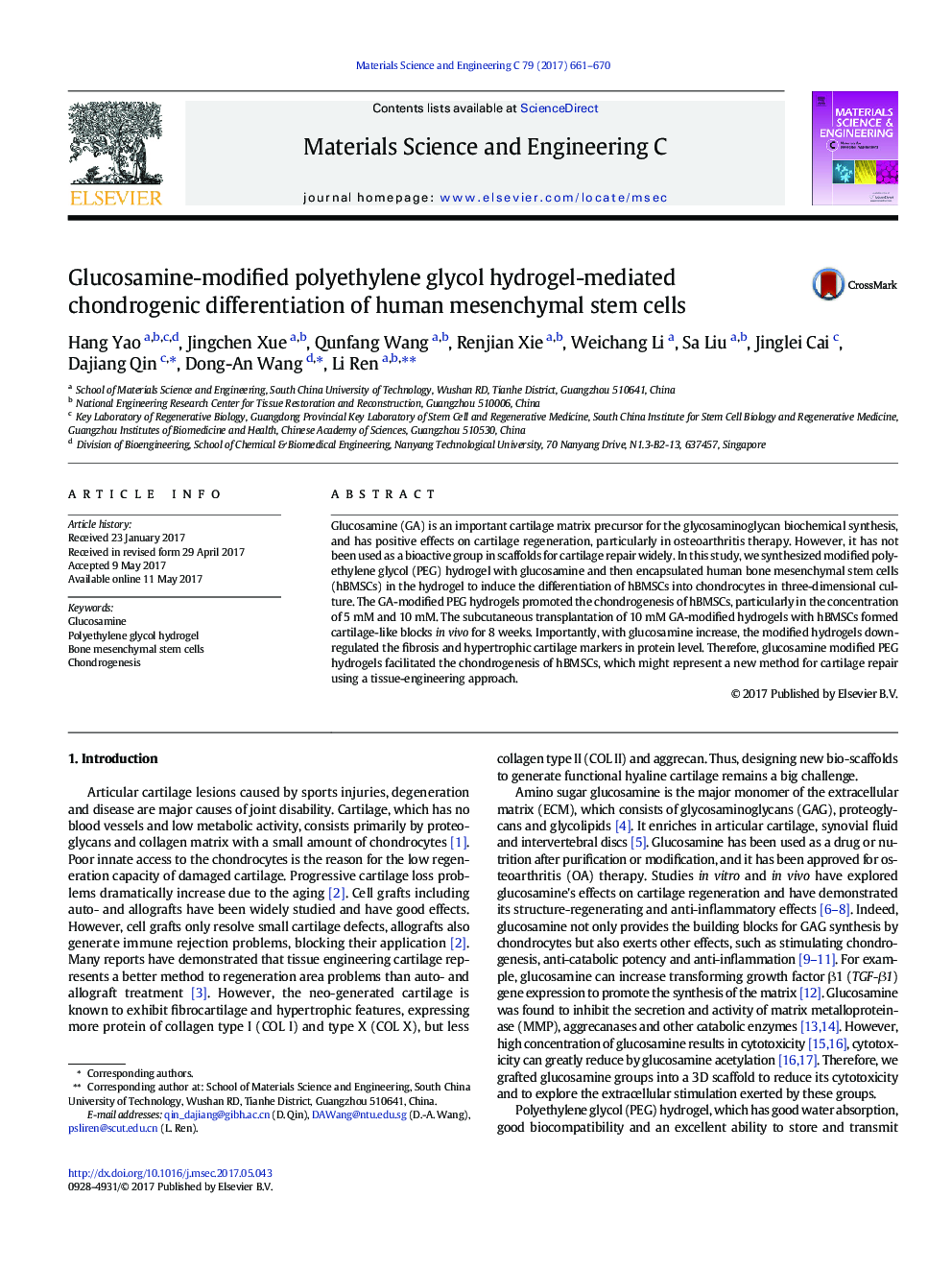| Article ID | Journal | Published Year | Pages | File Type |
|---|---|---|---|---|
| 5434772 | Materials Science and Engineering: C | 2017 | 10 Pages |
â¢Glucosamine grafted PEG hydrogels through photo-crosslinking synthesis was a potential method in cartilage repair applications.â¢It improved the bioactive group numbers without the toxicity in vitro.â¢It promoted chondrogensis of hBMSCs with low fibrosis and hypertrophic cartilage markers expression in vitro.â¢It promoted the cartilage forming of encapsulated hBMSCs in vivo.
Glucosamine (GA) is an important cartilage matrix precursor for the glycosaminoglycan biochemical synthesis, and has positive effects on cartilage regeneration, particularly in osteoarthritis therapy. However, it has not been used as a bioactive group in scaffolds for cartilage repair widely. In this study, we synthesized modified polyethylene glycol (PEG) hydrogel with glucosamine and then encapsulated human bone mesenchymal stem cells (hBMSCs) in the hydrogel to induce the differentiation of hBMSCs into chondrocytes in three-dimensional culture. The GA-modified PEG hydrogels promoted the chondrogenesis of hBMSCs, particularly in the concentration of 5Â mM and 10Â mM. The subcutaneous transplantation of 10Â mM GA-modified hydrogels with hBMSCs formed cartilage-like blocks in vivo for 8Â weeks. Importantly, with glucosamine increase, the modified hydrogels down-regulated the fibrosis and hypertrophic cartilage markers in protein level. Therefore, glucosamine modified PEG hydrogels facilitated the chondrogenesis of hBMSCs, which might represent a new method for cartilage repair using a tissue-engineering approach.
